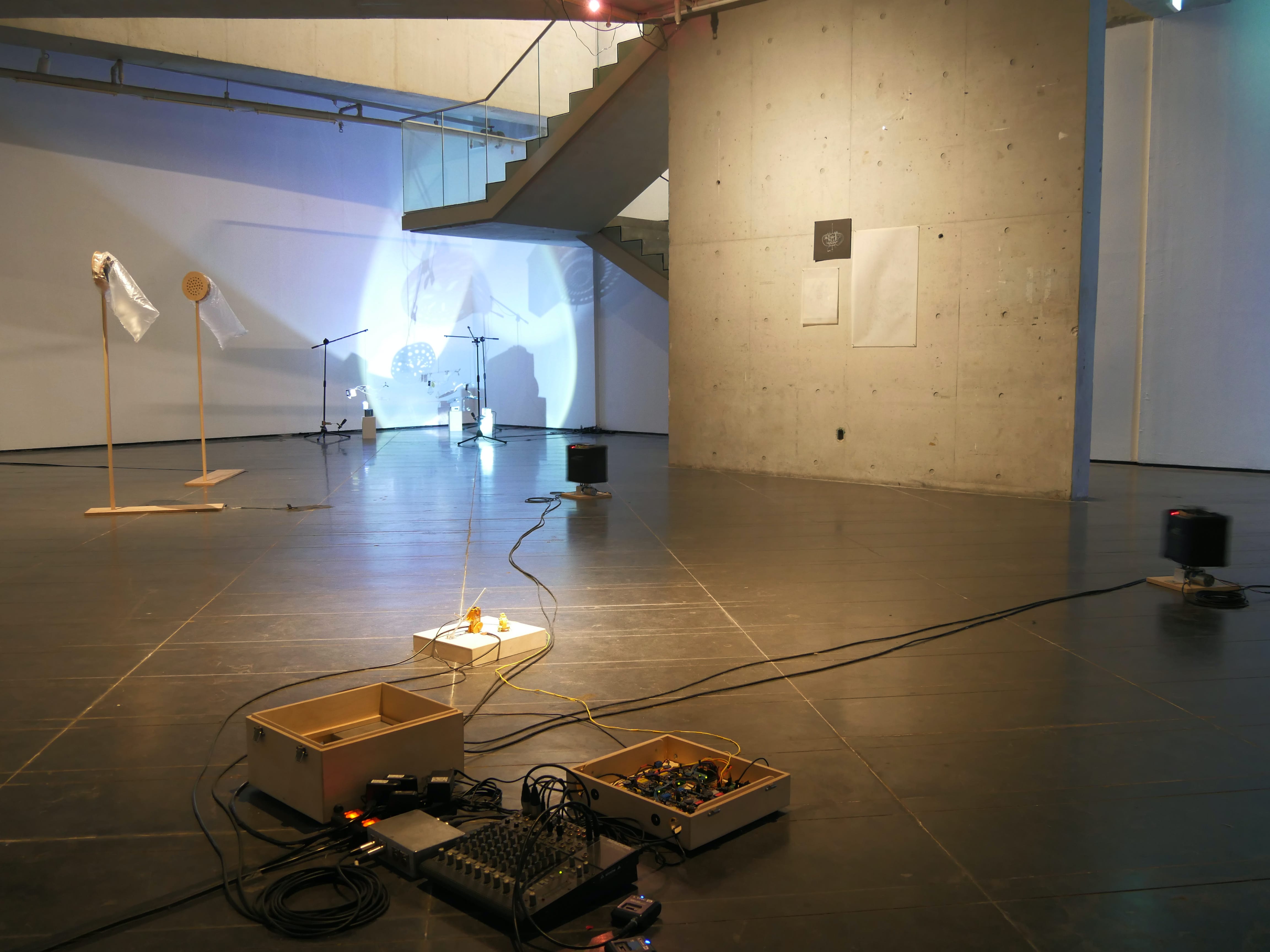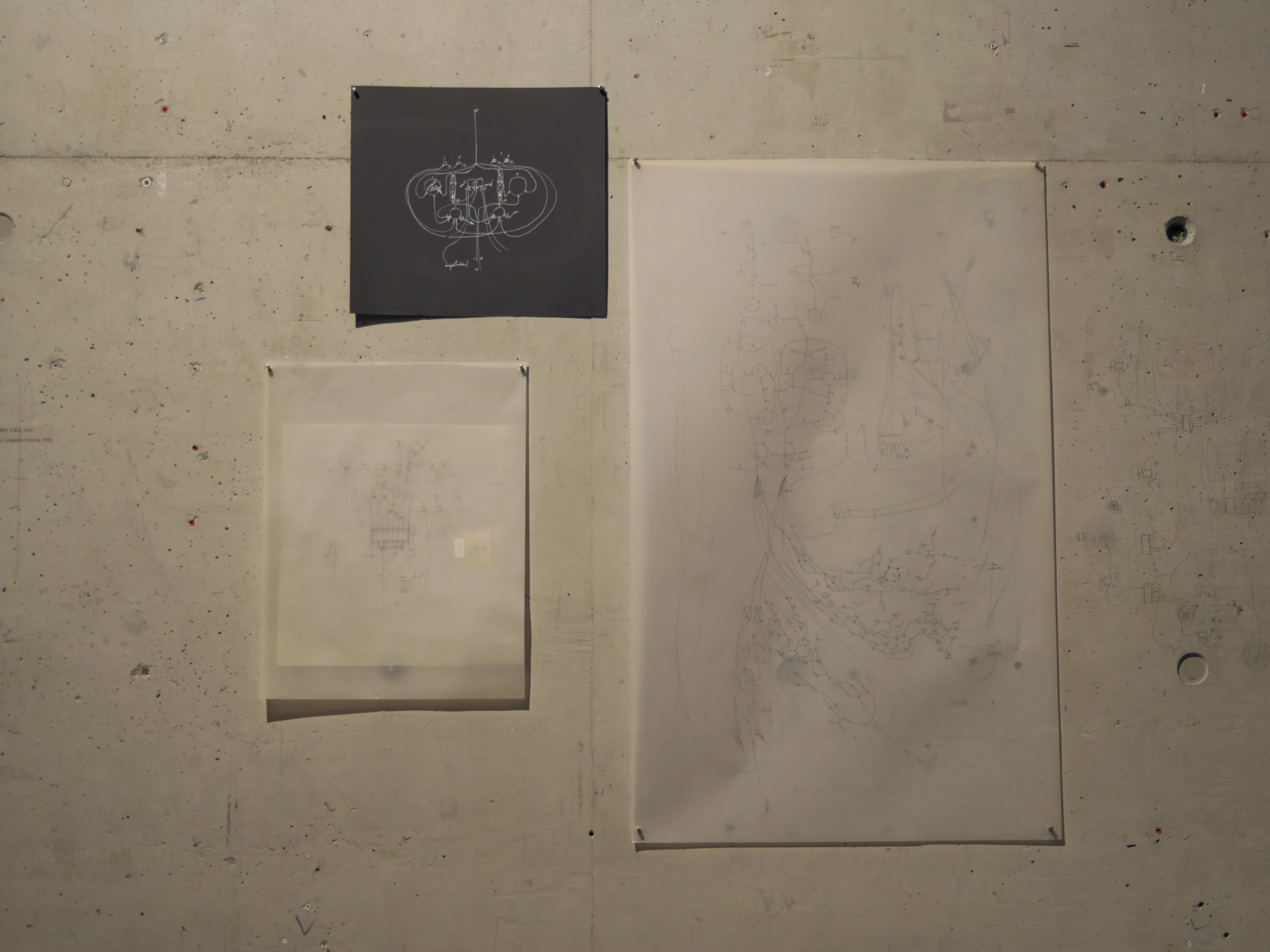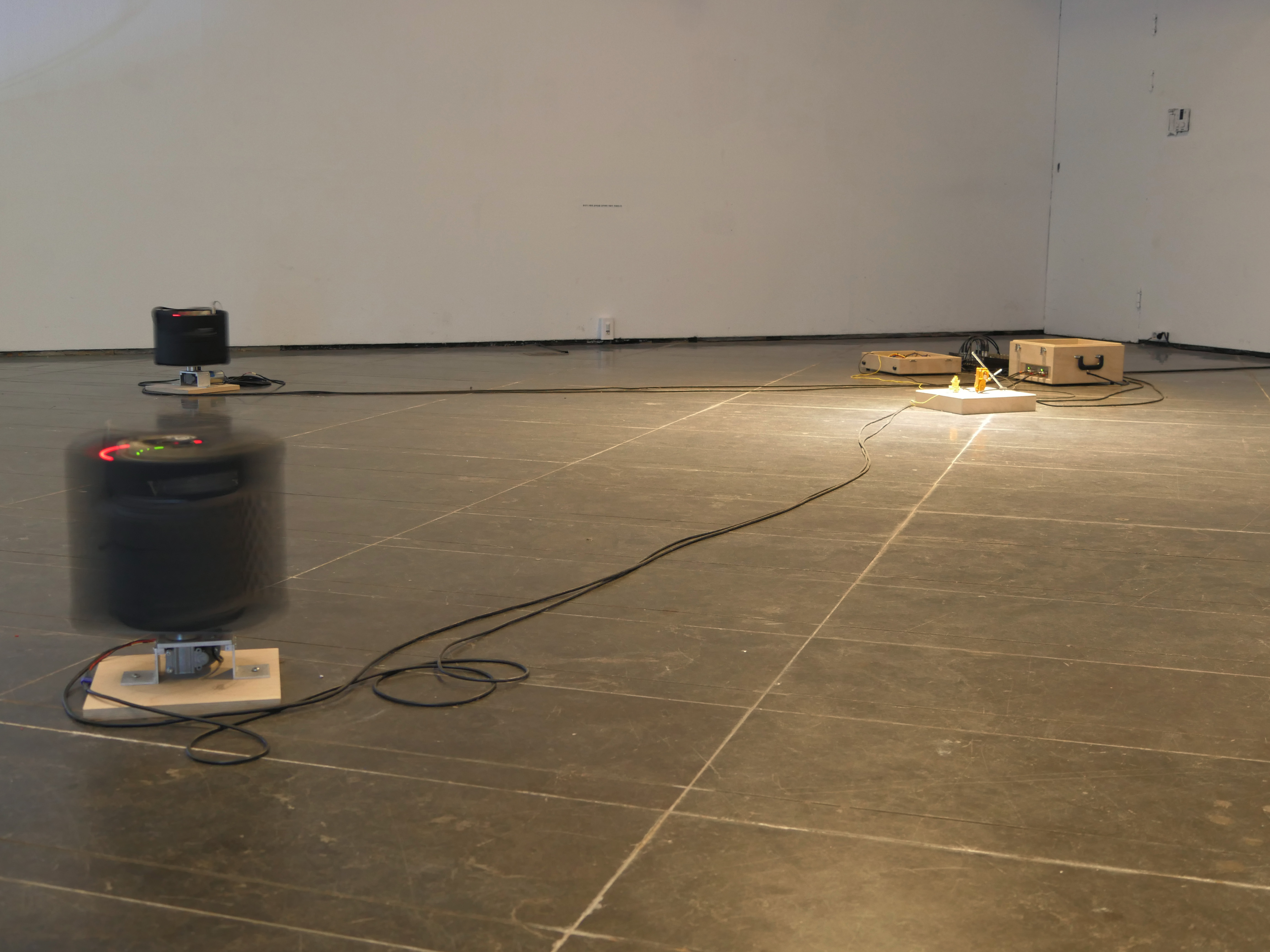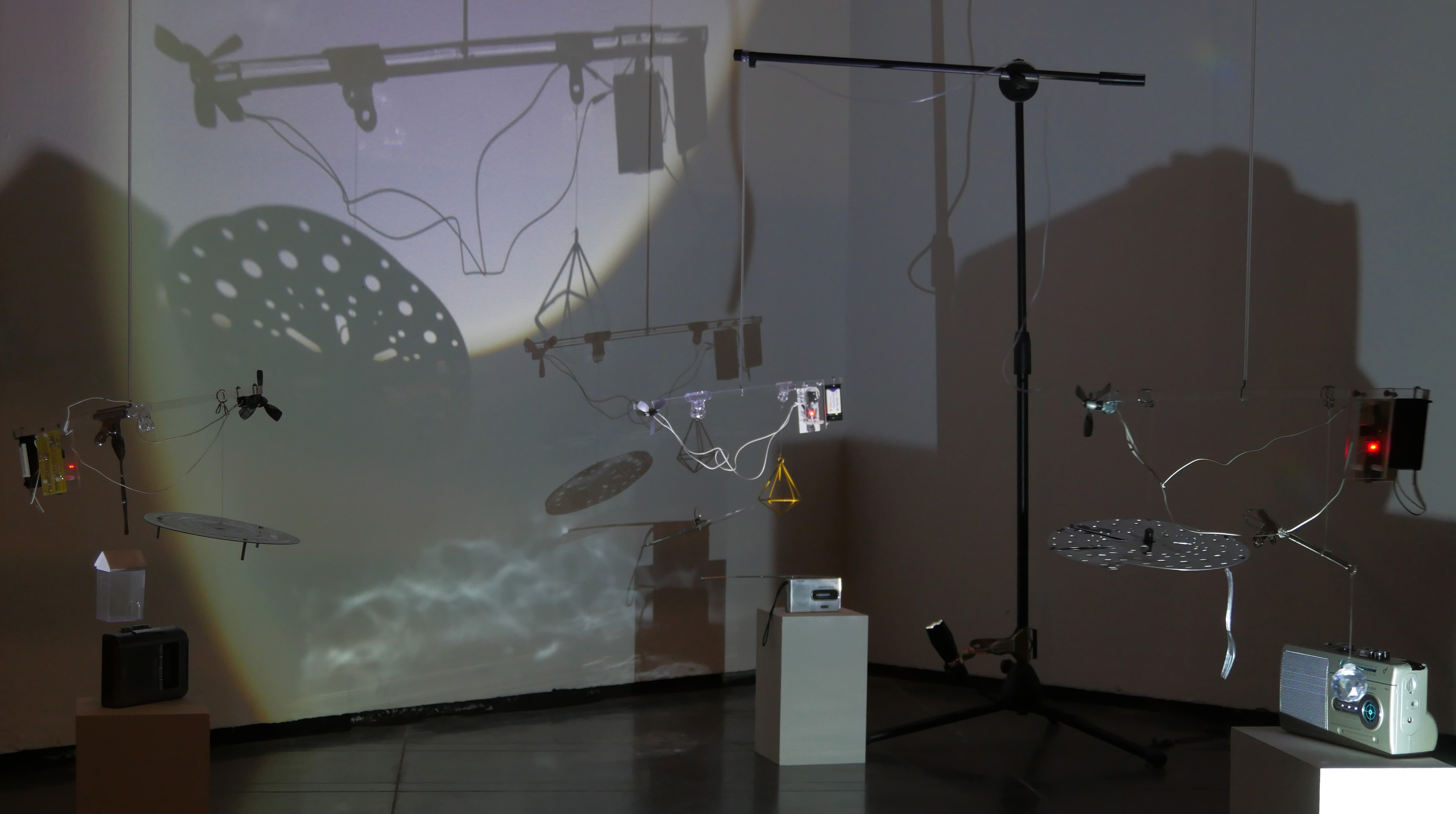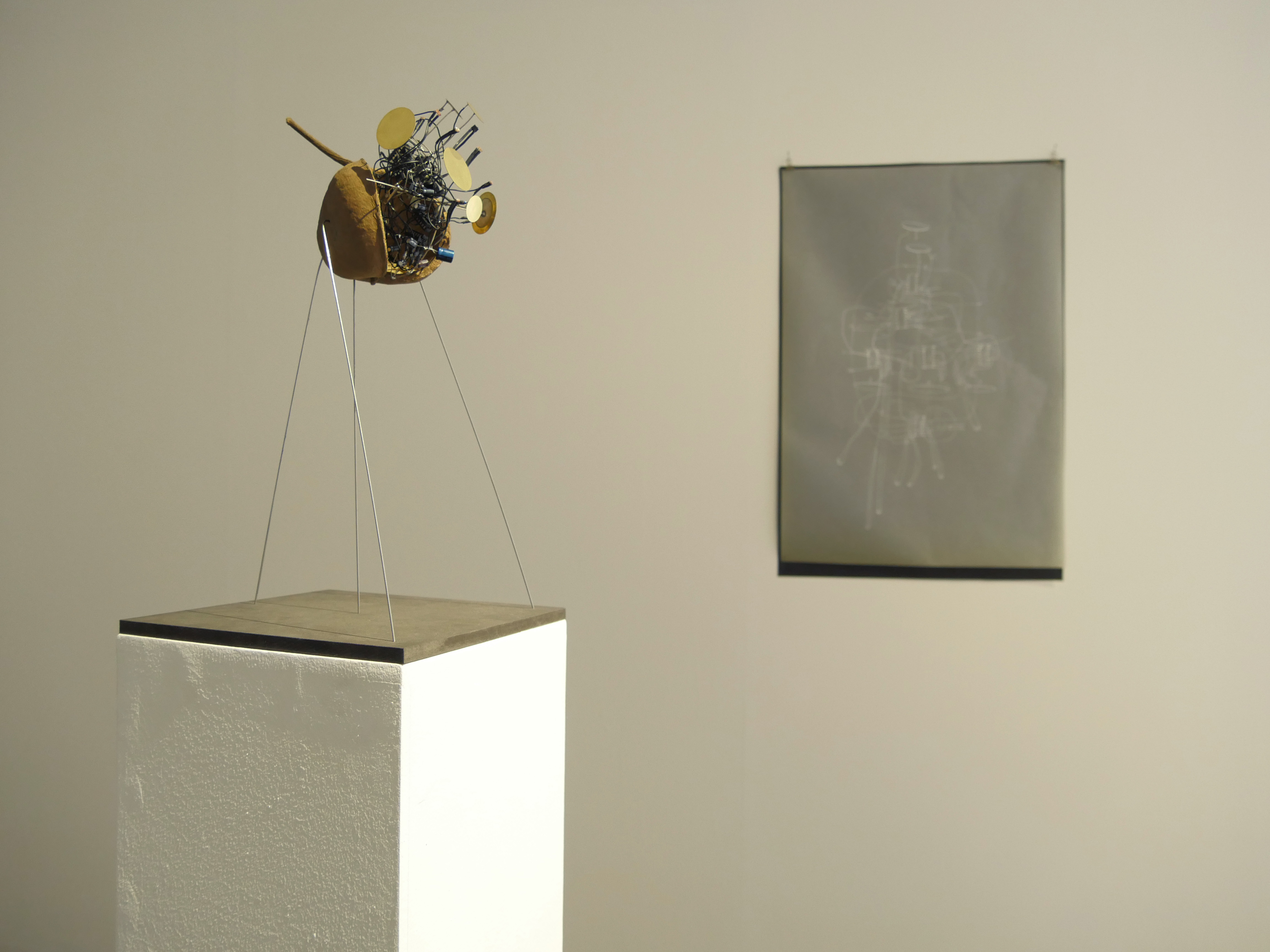The theme of Women Hack SFX Seoul 2018 is Woman, Hardware, Sound. In this fifth installment of SFX Seoul, the festival addresses Woman as a social construct and explores the link and dynamics between gender and sound culture. All participating artists of Women Hack SFX Seoul 2018 are women.
One necessary condition of artistic practice is the artist’s mastery of, or familiarity with, production techniques. For installation or sculpture artists in particular, the adoption of woodworking and metalwork skills along with the ability to handle electrical and mechanical devices are crucial to their creative process. For much of the past, the presumption has been that women are less suited to such technical work and less likely to learn and master skills necessary for artistic production due to certain ‘inherent’ physical traits or characteristics that are supposedly hardwired into the brain. Each of the ‘women’ artists participating in Women Hack SFX Seoul 2018 is also a seasoned technician who has continuously demonstrated their artistic capabilities in the face of such stereotyping. These are ‘hardware hackers’ who create their own individual sound by dismantling or reassembling hardware.
The neighborhood of Hongdae, home to SFX 2018, has been central to the development of the Korean indie music scene, and long been regarded as the mainstay of youth and club culture. With the large influx of commercial capital in the 2000s, the area has undergone a lot of changes, seeing increasing gentrification and flocks of descending tourists, and has witnessed a rapid transformation of the cultural value of art. Women Hack SFX Seoul 2018 is an artistic response to the current domination of Korean sound culture by industry-backed commercial pop music. Korean pop music culture and the figure of the ‘idol’ singers that have come to represent this culture enforce heteronormative gender roles and make explicit market-oriented neoliberal values and class- or status-based hierarchies. Women Hack SFX Seoul 2018 reconsiders the aesthetic sensibilities and identities of artists involved in the making of independent sound cultures as creators rather than consumers, in a bid to foster a new auditory culture in the Hongdae area.
This year’s festival includes a Make Your Own Musical Instrument DIY Workshop, in which participants can create their own sound machines by hacking hardware, and a Sound Performance Night. We hope these platforms will provide visual artists and musicians of Hongdae the space to explore together various artistic concerns, questions, and possibilities in relation to ‘women’s sound’.
Written by Ji Yoon Yang
About the Artists & Artworks
Marla Hlady
Marla Hlady (b. 1965, Canada) draws, makes sculpture, works with sites and sounds and sometimes makes video. Hlady’s kinetic sculptures and sound pieces often consist of common objects (such as teapots, cocktail mixers, jars) that are expanded and animated to reveal unexpected sonic and poetic properties often using a system-based approach to composition. She’s shown widely in solo and group shows. She has mounted site works in such places as the fjords of Norway, a grain silo as part of the sound festival Electric Eclectic, an apartment window in Berlin, a tour bus in Ottawa. She also, at times, collaborates. She currently lectures in the Department of Arts, Culture and Media (University of Toronto at Scarborough) and the Graduate Faculty in Visual Studies (Daniels Faculty of Architecture, Landscape and Design, University of Toronto).
Spincycle, 2018
Two guitar amplifiers-as-machines twirl, turn, shift and displace the sounds of mechanical toys, the gallery space, and each other into a choreographed composition. The amplifiers are part of The Instrument Project, a project that asks questions such as: What would it be like to be surrounded by an instrument? What if some of these parts moved on their own? And what would happen if this instrument could be situated in different places? Portability allows an exploration of different acoustic environments. Portability also pushes sounds/instruments up against various social worlds.
Marla’s practice predominantly involves audio and kinetic based sculpture and sculptural site and installation works. The sculptural pieces take on a myriad of forms and are made of a variety of materials ranging from motors, microprocessors and audio to wood, metal and found objects. She consistently addresses the idea of utility in her works by making sculptures and installations function, literally with kinetics or through the use-ability of the object. Her work, however, alters the function we expect from the things they resemble. Whether an independent sculpture or an installation, how a visitor activates or is invited to interact with a work is a part of the functional understanding of the work. Ultimately, it’s the relationships between the work, the space it occupies and the implications of the visitor (both a physical body and a social construction) that interests the work.
Insook Bae
Insook Bae (b. 1975, Korea) performances with interacting apparatuses, everyday sounds and musical noises. Since 2012 she performs as member of the experimental groups group ‘Upcycle Roundup’ and ‘Howling’. In 2013, she was selected as ‘MAP’ emerging artist supported by the Seoul Foundation for Culture and participated in the exhibition Sounding Sounder. She also participated in Mute off (Gallery RAHAN, Seoul, 2014), Respect Audio (17717, Seoul, 2015), Aobyonging Festival (Seoul Theater Center, 2016). She is currently artist in residence at the Incheon Art Platform Baekryung.
Reader, Sound Installation, 2018
The music is created by inputting the sound and movement of a cassette player, a CD-ROM, a hard disk, and a floppy disk which are all devices reading information which can be interpreted as sound. The Reader is a composition-machine and player that organically connects the sounds of individual devices and processes them into musical data producing melodies and rhythms.
Wonjung Shin
Wonjung Shin (b, 1981, Korea) is an artist who creates objects, media, situations, and rhythms. Her compositions of various material & ephemeral objects, and events interact with space and time. She has participated in major exhibitions such as Signal Trees (Gwangju Media Arts Festival, 2017), Cybernetic Fantasy: Our Bright Future (Nam June Paik Art Center, Yongin, 2017), Objectology ll: (National Museum of Modern and Contemporary Art, Gwacheon, 2015) and she has performed in a number of community sound projects including Citizen Band (Ansan International Street Festival, 2017), Megaphone of All, Wednesday Culture Festival for Colt Coltek Workers (Seoul, 2016). Wonjung is working towards a universal communication with the body and the senses and invites the visitors to actively engage in the work. She is a member of the duo ‘Diana Band’ whose practice explores experimental media art for relational aesthetics.
Commotion, Sound Installation, 2018
If there is no one to listen to the voice, go to the bamboo forest. The bamboo forest remembers the voices after the vocal bodies have gone silent. Believing that the bamboo forest will swallow the voices and spit them out at the right time, humans and bamboo forests share some kind of psychological solidarity.
Commotion is a work of a human who tries to communicate through the voices of objects, the environment and the medium. The visitor, in certain situations and in the web space share a common interface with other visitors, creating common sounds, convening around the sounds in the physical space or the nature of the sounds. The sound landscape where the textures and patterns of the sounds are intertwined represents the people voices and provides psychological solidarity. Eight speakers and objects with a physical sound device have an everyday appearance. Visitors are offered access to a specific web page via their smart device. The web page serves as a common interface by providing common scroll and selection buttons to visitors who are connected at the same time. When several visitors, connected at the same time, adjust a single scrollbar, the sound of the objects is emitted into the space or the nature of sound is variably adjusted.
Elico Suzuki
Elico Suzuki is an improvisational musician and instrument builder based in Tokyo, Japan. She graduated from Musashino Art University and the Institute of Advanced Media Art and Science. Suzuki has continued to intertwine music and new media into her practice—especially in her instrument building and sound art. Suzuki has solo exhibitions such as The Moon of Jungfrau (NTT InterCommunication Center, Tokyo, 2007), Preparedt (Gift_lab, Tokyo, 2010), and Recursive Piano, 20202, Tokyo, 2013) and has participated in major group shows such as Komimaru Show (Suita History & Culture Regional Development Center, Osaka, 2011), Sound Garden (Striped House Museum, Tokyo, 1993).
Three Worlds, Sound installation, 2018
The title of this work is borrowed from a Maurits Cornelis Escher lithograph. The three worlds of this work are the actual space which mobiles objects and audiences exist, shadows of mobile objects and lights, and electromagnetic waves from motors and radios. The movement of mobiles are caused by the fan of the mobile and its reaction force. Sounds of radio are changed by the interference of electromagnetic waves by the motor of the fan. The prototype of this mobile object has usually used in her sound performances. She has remade it to move a month.
Ioana Vreme Moser
Ioana Vreme Moser (b. 1994, Rumania) is a transmedia narrator and sound artist based in Berlin. engaged with research activities, electronic poetics, and ludic notations. She uses organic materials, lost and found mundane objects, junk, machinery and electrical components to disclose inconspicuous events that appear on a daily basis in intimate environments. Her work currently involves electro-mechanical instruments, sound sculptures, kinetic installations, audio-visual performances, graphic notations, softly spoken recordings, data compendiums and video pieces.
Zurkubuk, Nux Stridens, klangobjekt - Circuit diagrams, 2017
A nocturnal creature and a city-dweller by nature, the grasshopper inhabits the nutshell of a Pterygota Alatata. Once stimulated, the insect’s pars stridens mechanism resounds. By gently rubbing body parts against each other, a kind of chirr begins. The oscillations are modulated in a cascade of aleatoric piezoelectric vibrations that emerge into rhythmic chants. They vary in expressiveness and intensity and follow the desire for communication and proximity.
About the Performances
Commotion, Wonjung Shin, 2018
Eight speakers are arranged in a large circle. They produce a spatial sound moving in one direction. The performer creates a pattern of sound by generating and varying the voices of the performing devices. At the end of the performance, all visitors will participate in the performance with smartphones. Visitors are invited through a web platform to simulate a simple interface, tapping on a specific beat, playing a voice file and creating a common voice.
Noise and Ukulele, Insook Bae, 2018
Play a ukulele modified with string and percussion elements with an analog synthesizer’s noise oscillator and filter.
Coquetta, Ioana Vreme Moser, 2018
The Coquetta flourishes in a sardonic cosmetic beautifying ritual, amongst dandizectric’ discords and modified ‘pink-taxed’ items. The desired flawless looks unveil their poisonous essence: lead and arsenic are all-time favourite chemical compounds used in makeup. The step-by-step body preparation occurs as a rhythmical daily toilette routine. Hair combing, moisturizing, scrubbing, eyelash curling, eye-shadowing, powder-puffing, lipstick application, and other sounding manoeuvres get chiselled by the control voltages of the tapping electronic-stilettos. The buzzes of the body appearance altering devices blend inside of the to-go wig boxes and other flirtatious velvet gizmos soldered merely from trash finds.
Credit
Presented by Alternative Space LOOP, Sound Arts Korea
Organized by Sound Arts Korea
Sponsored by Seoul Foundation of the Arts
Cooperated with Japan Foundation Seoul, Canada Council for the Arts, Goethe Institut Seoul, Channel 1969, Edelweiss Korea
Sound Arts Korea
In 2006, Baruch Gottlieb & Ji Yoon Yang established the Sound Arts Korea. Sound Effects Seoul (SFX Seoul) is the first international sound art festival in Korea begun in 2007 by Sound Arts Korea. It has featured the work of over 50 artists from over 20 countries, from radio art to kinetic art, from voice to machine noises, from performance to sound walk to installation. SFX Seoul aims to expand the listening culture in Korea and increase awareness of the soundscape, contemporary music, noise, experimental sound works to the Korean public.
Directors: Baruch Gottlieb, Ji Yoon Yang
Project Manager: Sun Mi Lee
Coordinator: Jihye Pi
Media Design: Nara Shin
Assistant: Kyungbong Kim
Technician: Doosung Moon
Design: Dohyung Kim
Web Design: Jinoon Choi
http://sfxseoul.org/









